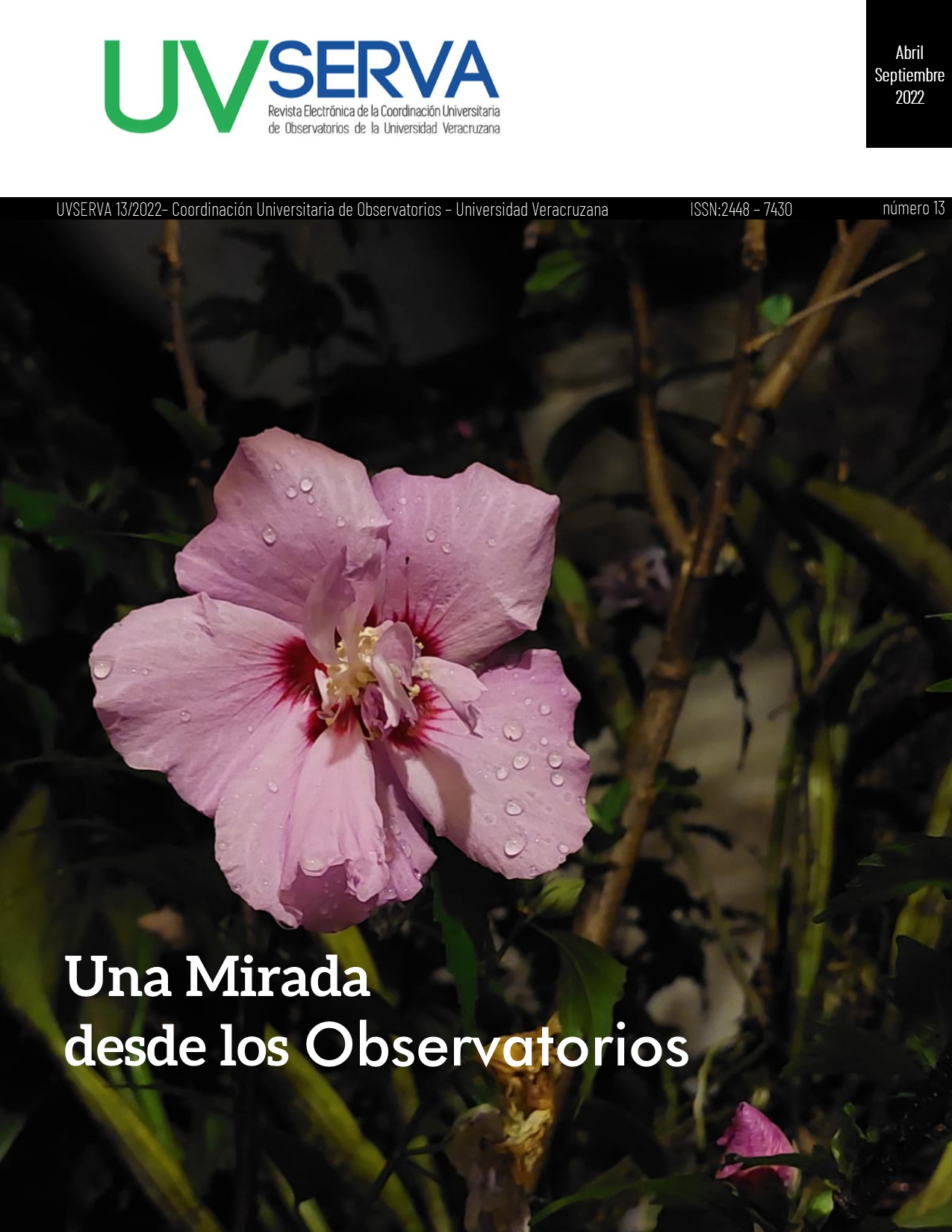Abstract
The purpose of this paper is to exhibit the transient and residual signal of stratification and observed flow at the entrance of Alvarado Lagoon. This Lagoon has a free connection to the sea and it is exposed to microtidal conditions and fluvial/rain bimodal discharge. Temperature, salinity and flow data, collected in two 24 hr campaigns, under different fluvial discharge, were analyzed. According to the stratification parameter value (Sp > 1) and estuarine Richardson number value (RiE > 4), the entrance of Alvarado Lagoon behaves as a saltwedge estuary and is mainly governed by fluvial discharge. The residual flow is dominated by the gravitational circulation in the dry season, and by the fluvial discharge in the rainy season. For both fluvial discharge conditions, the subtidal salinity profiles show strong stratification (Sp >1).
References
Balthis, W. L., Hyland, J. L., & Bearden, D. W. (2006). Ecosystem responses to extreme natural events: impacts of three sequential hurricanes in fall 1999 on sediment quality and condition of benthic fauna in the Neuse River Estuary, North Carolina. Environmental monitoring and assessment, 119(1), 367-389.
Cameron, W. M., & Pritchard, D. W. (1963). Estuaries (306–324). The Sea, 2.
Dyer, K. R. (1991). Circulation and mixing in stratified estuaries. Marine Chemistry, 32(2-4), 111-120.
Espinosa, G. A. (2008). Estudio teórico y práctico de la cuña salina: régimen estacionario y transitorio (Doctoral dissertation, Universidad de Cantabria).
Geyer, W. R., & Ralston, D. K. (2011). 2.03—The dynamics of strongly stratified estuaries. Treatise on Estuarine and Coastal Science. Amsterdam: Elsevier, 37-52.
Gonenc, I. E., & Wolflin, J. P. (2004). Coastal lagoons: ecosystem processes and modeling for sustainable use and development. CRC Press.
Haralambidou, K., Sylaios, G., & Tsihrintzis, V. A. (2010). Salt-wedge propagation in a Mediterranean micro-tidal river mouth. Estuarine, Coastal and Shelf Science, 90(4), 174-184.
Ibaňez, C., Pont, D., & Prat, N. (1997). Characterization of the Ebre and Rhone estuaries: A basis for defining and classifying salt‐wedge estuaries. Limnology and Oceanography, 42(1), 89-101.
Kantha, L., 2005. Barotropic tide in the Gulf of Mexico. In: Circulation in the Gulf of Mexico Observation and Models. Geophysical Monograph Series, vol. 161 159-16.
Kasai, A., Kurikawa, Y., Ueno, M., Robert, D., & Yamashita, Y. (2010). Salt-wedge intrusion of seawater and its implication for phytoplankton dynamics in the Yura Estuary, Japan. Estuarine, Coastal and Shelf Science, 86(3), 408-414.
Krvavica, N., Gotovac, H., & Lončar, G. (2021). Salt-wedge dynamics in microtidal Neretva River estuary. Regional Studies in Marine Science, 43, 101713.
Krvavica, N., Travaš, V., & Ožanić, N. (2017). Salt-wedge response to variable river flow and sea-level rise in the Microtidal Rječina River Estuary, Croatia. Journal of coastal research, 33(4), 802-814.
Olvera-Prado, Erick Raúl. (2014). "Respuesta hidrodinámica de las lagunas y ríos del estuario del Papaloapan a forzamiento meteorológico". (Tesis de Maestría). Universidad Nacional Autónoma de México, México. https://repositorio.unam.mx/contenidos/262930
Perales-Valdivia, H., Sanay-González, R., & Valle-Levinson, A. (2018). Effects of tides, wind and river discharge on the salt intrusion in a microtidal tropical estuary. Regional Studies in Marine Science, 24, 400-410.
Pérez, J. M., & Ulloa, M. J. (2017). HIDROGRAFÍA DEL ESTUARIO DEL RÍO PÁNUCO EN AGOSTO 2015. Academia Tamaulipeca de Investigación Científica y Tecnológica AC (ATICTAC). Libro de Memorias del 28 Encuentro Nacional de Investigación Científica y Tecnológica del Golfo de México.
Portilla-Ochoa, E. 2003. Establecimiento de Unidades de Gestión Ambiental en el Humedal de Alvarado, Veracruz, México: Base para su Ordenamiento Ecológico y Social. Reporte académico semestral North American Wetlands Conservation Council (NAWCC). Área Biología de la Conservación. Instituto de Investigaciones Biológicas. Universidad Veracruzana.
Riverón-Enzástiga, Mayra Lorena. (2008). "Análisis de la variabilidad de las descargas de agua de los principales ríos del sur de la cuenca hidrológica del Golfo de México". (Tesis de Licenciatura). Universidad Nacional Autónoma de México, México. https://repositorio.unam.mx/contenidos/330348
Ruiz-Barradas, A., Tejeda-Martínez, A., Miranda-Alonso, S., & Flores-Zamudio, R. H. (2010). Climatología en Atlas del patrimonio natural, histórico y cultural de Veracruz. Gobierno del estado de Veracruz. México. http://cdigital.uv.mx/bitstream/123456789/9649/1/03CLIMATOLOGIA. pdf.
Ruiz-Fernández, A. C., Maanan, M., Sanchez-Cabeza, J. A., Pérez-Bernal, L. H., López-Mendoza, P., & Limoges, A. (2014). Chronology of recent sedimentation and geochemical characteristics of sediments in Alvarado Lagoon, Veracruz (southwestern Gulf of Mexico). Ciencias Marinas, 40(4), 291-303.
Schettini, C. A. F., Miranda, J. B. D., Valle-Levinson, A., Truccolo, E. C., & Domingues, E. C. (2016). The circulation of the lower Capibaribe Estuary (Brazil) and its implications for the transport of scalars. Brazilian Journal of Oceanography, 64, 263-276.
Sierra, J. P., Sánchez-Arcilla, A., Del Rı́o, J. G., Flos, J., Movellán, E., Mösso, C., ... & Romero, I. (2002). Spatial distribution of nutrients in the Ebro estuary and plume. Continental Shelf Research, 22(2), 361-378.
Tenorio-Fernandez, L., Zavala-Hidalgo, J., & Olvera-Prado, E. R. (2019). Seasonal variations of river and tidal flow interactions in a tropical estuarine system. Continental Shelf Research, 188, 103965.
Thompson, P. A. (2001). Temporal variability of phytoplankton in a salt wedge estuary, the Swan–Canning Estuary, Western Australia. Hydrological Processes, 15(13), 2617-2630.
Valle-Levinson, A. (Ed.), 2010. Definition and classification of estuaries. In: Contemporary Issues in Estuarine Physics. Cambridge University Press, Cambridge, pp. 1–11.
Watanabe, K., Kasai, A., Antonio, E. S., Suzuki, K., Ueno, M., & Yamashita, Y. (2014). Influence of salt-wedge intrusion on ecological processes at lower trophic levels in the Yura Estuary, Japan. Estuarine, Coastal and Shelf Science, 139, 67-77.
Zou, T., Zhang, H., Meng, Q., & Li, J. (2016). Seasonal hydrodynamics and salt exchange of a shallow estuary in Northern China. Journal of Coastal Research, 74 (10074), 95-103.

This work is licensed under a Creative Commons Attribution-NonCommercial 4.0 International License.
Copyright (c) 2022 Diana Carolina Uscanga Montalvo, Rosario Sanay González, Héctor Perales Valdivia


